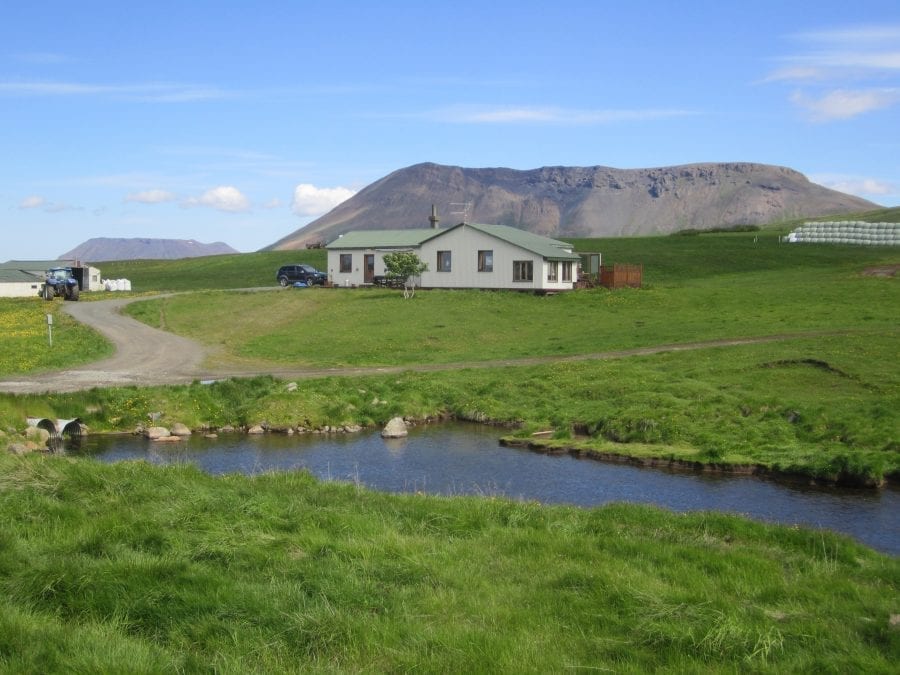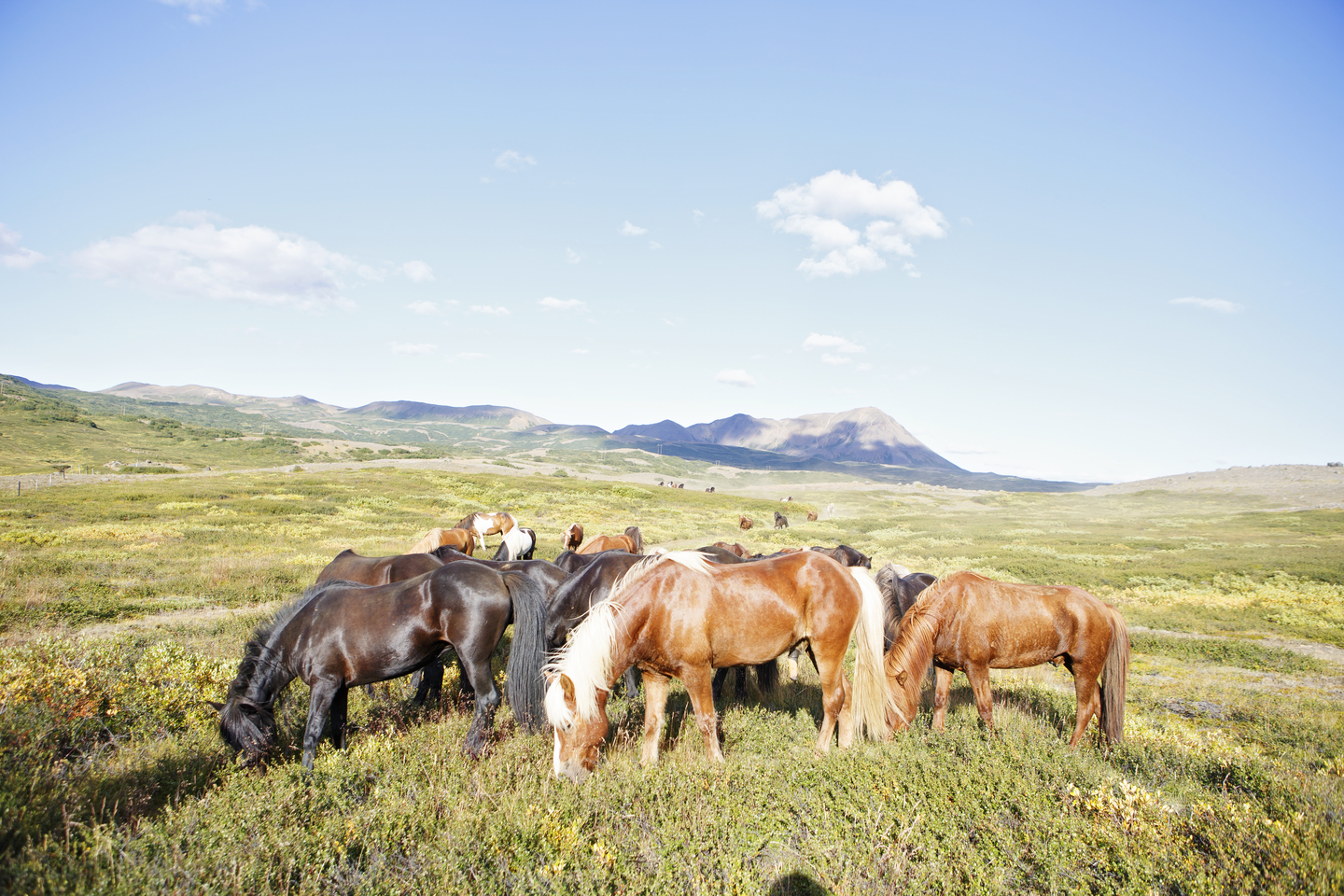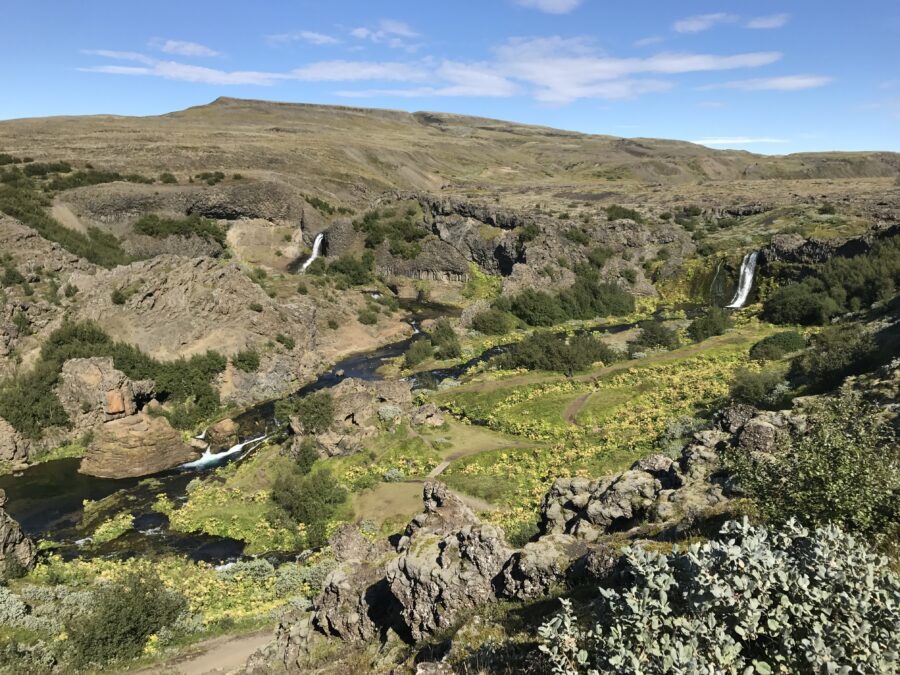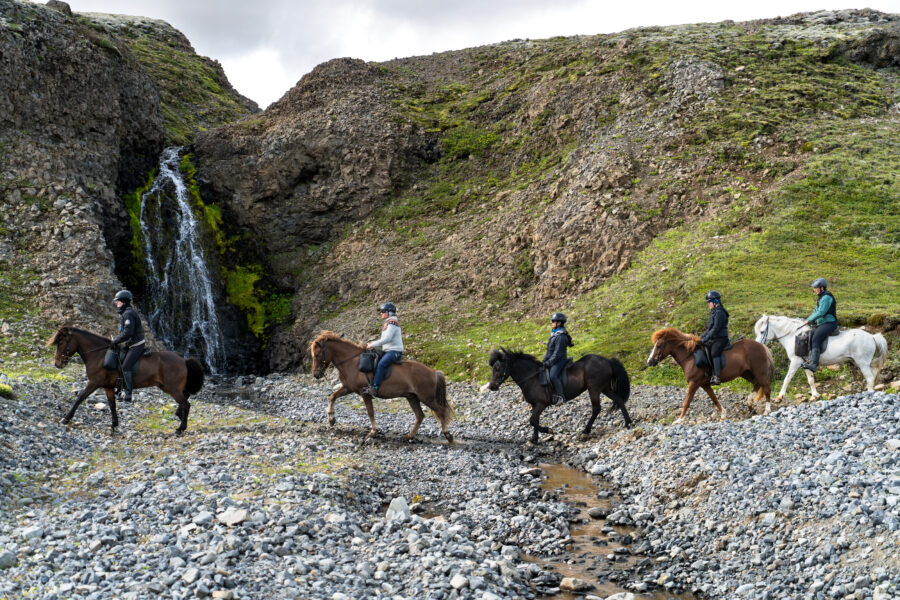The Arctic North
In diesem Teil Islands leben nur wenige Menschen, die meisten in kleinen Fischerdörfern an der Küste oder auf Bauernhöfen. Der Ritt hier im hohen Norden bietet Ihnen viel Abwechslung.
Termine 2026
- July 1 - 8
In diesem Teil Islands leben nur wenige Menschen, die meisten in kleinen Fischerdörfern an der Küste oder auf Bauernhöfen. Der Ritt hier im hohen Norden bietet Ihnen viel Abwechslung. Wir beginnen im Fjord Öxarfjörður eingerahmt von einer bergigen Landschaft und reiten über die Halbinsel Melrakkaslétta, ein Paradies für Vögelbeobachter, knapp unterhalb des Polarkreises. Hier befinden wir uns genau auf dem Atlantischen Rücken! An der Grenze Nordamerikas und Europas.
Zwischen Mitte Juni und Mitte Juli ist diese Gegend die „Heimat“ der Mittsommernachtssonne, die ihre goldenen Strahlen weit über die Fjorde des Nord-Atlantiks schickt.
Unsere Gastgeber werden Halldór und Elín auf dem Hof Bjarnastaðir sein. Sie sind bei vielen Isländern für ihre hervorragende Pferdezucht bekannt. Halldór genießt viel Ansehen in der Gemeinde und ist unter anderem der „Bergkönig“ wenn es im Herbst Zeit für die Schafsabtriebe ist.
Tour Highlights
Húsavík
is a town in north Iceland with around 2300 inhabitants around 10 km from the domestic airport. The town is famous for whale watching tours
Bjarnastaðir Farm
is situated in north-east Iceland in the low bushy area of Kerlingaskógur, close to the glacial river Jökulsá á Fjöllum and Dettifoss waterfall. It is the farm of Elín and Halldór, breeders of both horses and sheep, who will welcome you with their open arms

Fjord Öxarfjörður
is a broad fjörd in north east Iceland located right on top of the Mid -Atlantic ridge
Lake Skjálftavatn
After earthquakes 1975-1976 the land suddenly sank and the shallow but generous fishing lake Skjálftavatn emerged. It is among the larger lakes of Iceland and a source of generous fishing rivers
Tungurétt
round-up place
Melrakkaslétta
plains could translate Arctic Fox Field. It is inhabited by few with most of them living in little fishing villages along the coast. It has a highly versatile geography ranging from mountains up to 400 m high above sea level to cliffs, valleys, tundra and lakes full of trout. It is a real bird heaven with the largest migrations in spring and autumn and home to both Syberian driftwood and seals
Blikalónsdalur
A grassy grown valley with cliffs on its many edges that reaches all the way to the moors in the south
Hraunhafnarviti
is a lighthouse only 3 km away from the Arctic Circle. There we have good hiking roads and its harbor Hraunhöfn is often mentioned in many of the Icelandic Sagas
Arctic Circle
is the northern polar circle positioned 66, 33 degrees north of Equator but changes slightly. Iceland is just south of it but Grímsey, a small island, reaches north above it. For 24 hours each year during June and December solstices the sun remains solely above or below the horizon
Raufarhöfn
Most of the 250 inhabitants of this small village live of traditional fishing. It is the most northern village of Iceland’s mainland and where the Arctic Henge is located
Flautafell
is an old abandoned farm-house where nobody lives anymore. It’s about 65 meters above sea level with beautiful nature all around
Langanes
The peninsula is known for its rich bird life and stunning nature with rock stacks in the sea full of birds and wildlife
Öxarfjarðarheiði
The heath is about 500m above sea level and around 60km long. Around 1850 there were lots of farms but all were abandoned after the volcanic eruption in 1875. Now this heath is very rural and you hardly ever see people there
Jökulsárgljúfur National Park
was situated north around the river Jökulsá á Fjöllum and the waterfall Dettifoss. Since 2008 it has been a part of Vatnajökull National Park, the largest national park in Europe
Vatnajökull National Park
is a world Heritage Site since 2019 that combines the former parks Skaftafell in the south and Jökulsárgljúfur in the north. The area is large with varied geography of glaciers, waterfalls, rivers and a glacier lagoon. It has high geothermal and volcanic activity that also marks the landscape and its history
Ásbyrgi
one of the wonders of nature, a horseshoe-shaped canyon. The old saga says that the god Odin from northern mythology rode his giant horse Sleipnir who stepped down on the ground and formed this shoe print



